Click on images to enlarge

infestation (Photo: Forest and Kim Starr, USGS)
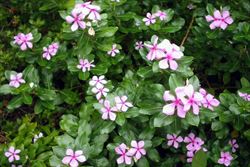
habit (Photo: Sheldon Navie)
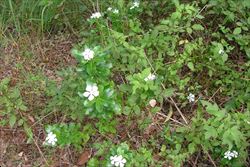
habit of white-flowered form (Photo: Sheldon Navie)

leaves and white flower (Photo: Sheldon Navie)

close-up of pink flower (Photo: Sheldon Navie)

immature fruit borne in pairs (Photo: Sheldon Navie)

close-up of leaves and mature fruit releasing their seeds (Photo: Sheldon Navie)

close-up of seeds (Photo: Steve Hurst at USDA PLANTS Database)

seedlings (Photo: Sheldon Navie)
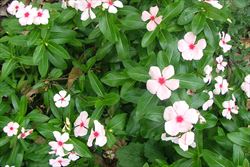
modern cultivar (Photo: Sheldon Navie)
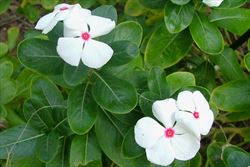
modern cultivar (Photo: Sheldon Navie)

modern cultivar (Photo: Sheldon Navie)
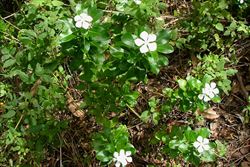
habit of the white-flowered form sometimes known as Catharanthus roseus 'Alba' (Photo: Sheldon Navie)

younger stems and leaves (Photo: Forest and Kim Starr, USGS)
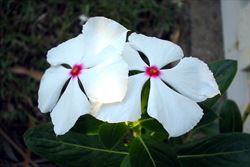
close-up of white flowers with pink centres, a form sometimes known as Catharanthus roseus 'Ocellata' (Photo: Sheldon Navie)

seedling (Photo: Sheldon Navie)
Scientific Name
Catharanthus roseus (L.) G. Don.
Synonyms
Ammocallis rosea (L.) SmallLochnera rosea (L.) Reichb.Vinca rosea L.
Family
Apocynaceae
Common Names
bright-eyes, Cape periwinkle, Madagascar periwinkle, old-maid, periwinkle, pink periwinkle, rose periwinkle, rosy periwinkle, vinca
Origin
Native to Madagascar.
Naturalised Distribution
This species is widely naturalised in northern Australia. It is common in eastern Queensland and also naturalised in the coastal districts of northern New South Wales, in the northern and western parts of Western Australia and in the coastal districts of the Northern Territory. It is also naturalised on Christmas Island and was reported to be naturalised in some parts of southern South Australia in the past.
Notes
Though commonly found near habitation, this species is also regarded as an environmental weed in New South Wales, Queensland and Western Australia. It is most abundant and troublesome in eastern Queensland. For example, it is abundant on Magnetic Island in northern Queensland and is listed among the 100 most invasive plants in south-eastern Queensland.
Pink periwinkle (Catharanthus roseus) is most commonly associated with coastal habitats (e.g. cliff faces, rocky ocean ledges and sand dunes) and other sites with sandy soils, but also grows in bushland and disturbed natural vegetation near urban areas.

